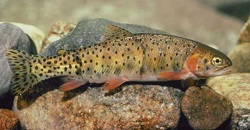“Darling, I’m having a struggle with the trout. They are too much for me in the swift, rushing river. I lose ‘em. Went out yesterday… and lost two—one a large fish. The ‘June Bugs’ – a red bodied insect, as big as the biggest grasshopper you ever saw, fall from the leaves on to the river and are such large juicy mouthfuls that the trout have abundant food, and don’t care much for a fly.”1

c 1890
Public Domain
Courtesy Wikipedia
Salmonflies are a type of large stonefly that live in many western rivers and are often called “rock rollers” or “shredders” because they hide under boulders and gorge themselves on leaf litter until early summer when they crawl out from under the rocks, shed their exoskeleton, and clumsily fly around hoping to bump into a mate. These bugs love cold, clean, oxygenated water, all of which are hallmarks of the Logan River. Existing records show that salmonflies were well established on the Logan River until at least 1951, after which time something wiped them out. The last time anyone saw a Pteronarcys on the Logan River was September 7, 1966, near Mendon Bridge.2
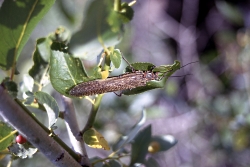
Photographer unknown;
1967
Yellowstone Photo Collection
Courtesy NPS and Yellowstone Association
Each semester, watershed science students at Utah State University don leaky waders and wander up Logan Canyon to conduct aquatic invertebrate sampling. I was once one of those bright-eyed students, standing in the Logan River with a kick-net and dreams of finding the long-lost Pteronarcys. I never found one. Over the years, researchers have ruled out obvious factors like water quality, stream temperature, or habitat, that might limit salmonfly reproduction on the Logan River. Chemical spills and sagebrush abatement in Logan Canyon during the 1950s may have originally contributed to the bugs’ demise, but doesn’t explain why they can’t survive for long in the river today. Of course, anglers have their own ideas about what going on, including tales of a giant Sasquatch urinating in the river somewhere near Rick’s Spring.
Even today the plot thickens. Continued aquatic invertebrate sampling by the Bug Lab has shown that salmonflies are also absent from Left Hand Fork of Blacksmith Fork River as well as upper Rock Creek.4 Incredibly, both of these streams are tributaries to the main stem Blacksmith Fork River, which is full of salmonflies. This anomaly has everyone scratching their heads. All anyone can say for certain is that some variable, biotic or abiotic, or possibly even “Sasquatch-iotic” is keeping salmonflies from populating these two tributaries. Could it be the same variable that’s keeping Frederick Jackson Turner’s “June Bugs” from reclaiming the Logan River? The answer to this question, along with whether Turner ever did land a trout, has yet to be answered.
For Wild About Utah, I’m Brad Hansen.
Footnotes:
1. Ray A. Billington, “Frederick Jackson Turner and ‘Logan’s National Summer School,’ 1924,” Utah Historical Quarterly 37, no. 3 (1969): 327.
2. Nancy A. Erman, “Occurrence and Distribution of Invertebrates in Lower Logan River” (master’s thesis, Utah State University, 1968), 17. Available online at https://digitalcommons.usu.edu/cgi/viewcontent.cgi?article=1333&context=etd
3. Mark Vinson, “A short history of Pteronarcys californica and Pteronarcella badia in the Logan River, Cache County, Utah.” January 14, 2008. Available online at https://www.usu.edu/buglab/Content/Files/salmonfly%20history.pdf
4. Phone conversation with Joe Kotynek, USU Bug Lab Taxonomist, January 24, 2017.
Credits:
Photo: Courtesy Wikipedia (Public Domain) and
Photo: Courtesy NPS and Yellowstone Association
Text: Brad Hansen
Additional Reading
Logan River Salmonfly Disappearance, USU Buglab Archived Projects, https://www.usu.edu/buglab/Projects/ArchivedProjects/

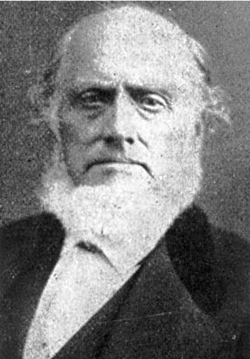
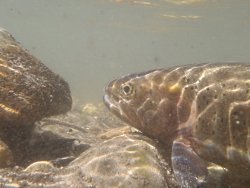
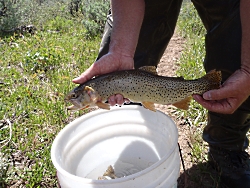
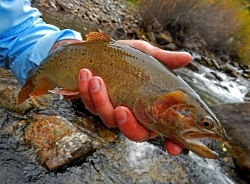
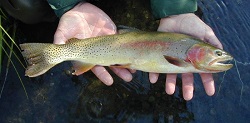
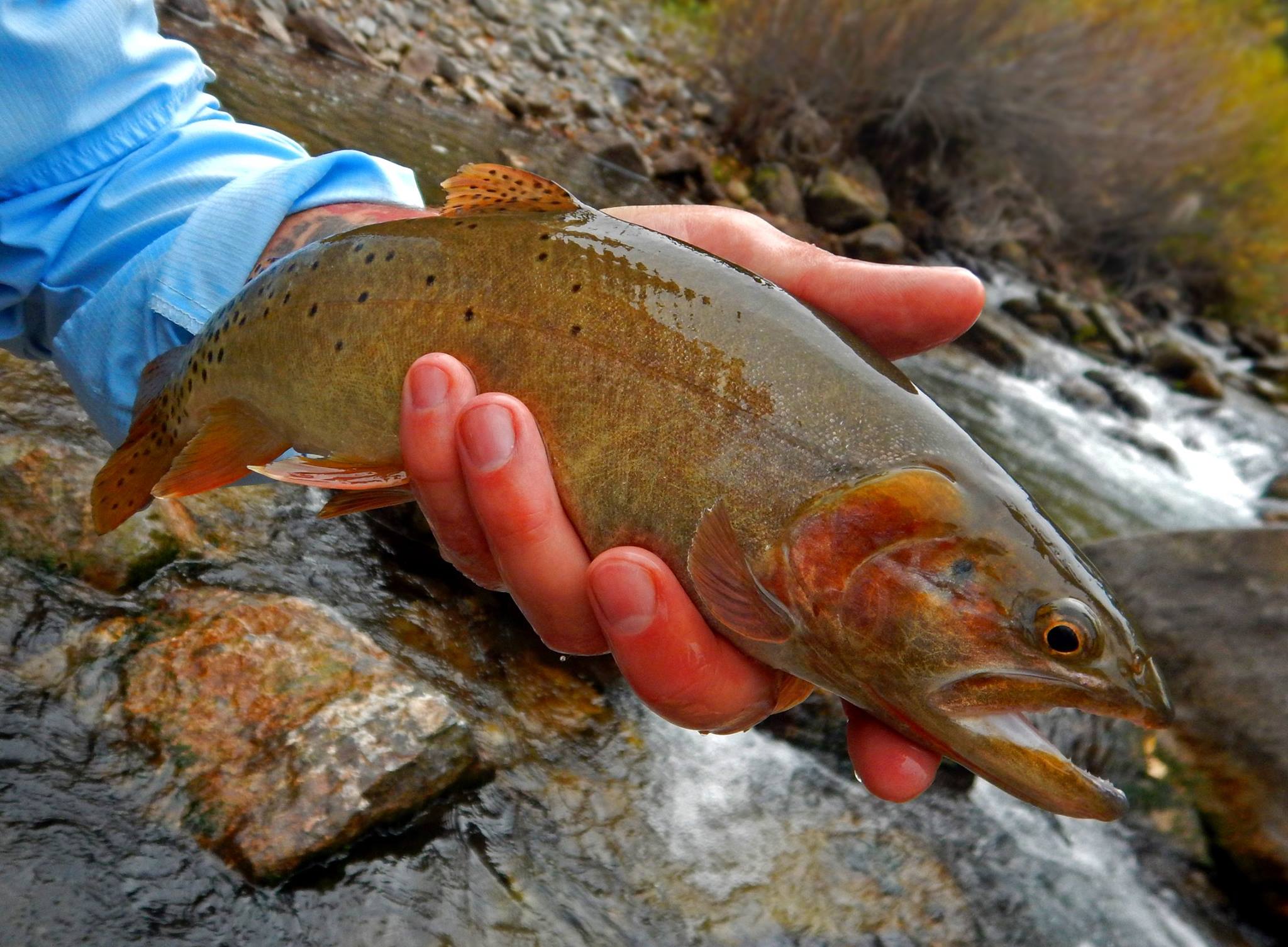 Cutthroat Trout on the Logan River, Copyright (c) Chadd VanZanten, Photographer
Cutthroat Trout on the Logan River, Copyright (c) Chadd VanZanten, Photographer